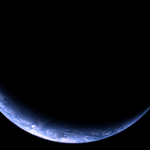 Technology
Technology  Technology
Technology  Humans
Humans 10 Everyday Human Behaviors That Are Actually Survival Instincts
 Animals
Animals 10 Animals That Humiliated and Harmed Historical Leaders
 History
History 10 Most Influential Protests in Modern History
 Creepy
Creepy 10 More Representations of Death from Myth, Legend, and Folktale
 Technology
Technology 10 Scientific Breakthroughs of 2025 That’ll Change Everything
 Our World
Our World 10 Ways Icelandic Culture Makes Other Countries Look Boring
 Misconceptions
Misconceptions 10 Common Misconceptions About the Victorian Era
 Mysteries
Mysteries 10 Strange Unexplained Mysteries of 2025
 Miscellaneous
Miscellaneous 10 of History’s Most Bell-Ringing Finishing Moves
 Technology
Technology Top 10 Everyday Tech Buzzwords That Hide a Darker Past
 Humans
Humans 10 Everyday Human Behaviors That Are Actually Survival Instincts
 Animals
Animals 10 Animals That Humiliated and Harmed Historical Leaders
Who's Behind Listverse?

Jamie Frater
Head Editor
Jamie founded Listverse due to an insatiable desire to share fascinating, obscure, and bizarre facts. He has been a guest speaker on numerous national radio and television stations and is a five time published author.
More About Us History
History 10 Most Influential Protests in Modern History
 Creepy
Creepy 10 More Representations of Death from Myth, Legend, and Folktale
 Technology
Technology 10 Scientific Breakthroughs of 2025 That’ll Change Everything
 Our World
Our World 10 Ways Icelandic Culture Makes Other Countries Look Boring
 Misconceptions
Misconceptions 10 Common Misconceptions About the Victorian Era
 Mysteries
Mysteries 10 Strange Unexplained Mysteries of 2025
 Miscellaneous
Miscellaneous 10 of History’s Most Bell-Ringing Finishing Moves
10 Driest Places on Earth
Approximately 71% of the Earth consists of water which is great because we all need water to survive. However, some places receive less than 0.09 inches (2 millimeters) of rainfall on average per year, qualifying them to be referred to as hyper-arid deserts. Even worse, some areas go without rain for years, making them relatively inhabitable.
Amazingly, 35% of earth’s land consists of desert areas meaning they are more comillimeterson than you think. Let’s explore 10 of the driest places on earth.
Related: 10 Of The World’s Last Unexplored Places
10 Pelican Point, Namibia
If you like sand surfing, chances are you have heard of the picturesque Pelican Point, Namibia. Despite being one of the driest places in the world, Pelican point constantly floods with tourists visiting and looking to surf on its sand dunes that stretch to the Atlantic Ocean.
Another reason why tourists love this place is that the climate is adaptable. Also, unlike some places on this list, the temperature in Pelican point doesn’t get too hot or cold. On average, this place receives about an inch (23 millimeters) of rainfall, meaning locals enjoy clear skies most of the year.
In this area, the sun shines for a total of 2,646 hours every year. According to the Koppen Geiger climate classification, this place falls under BWk (cold desert climate), so it’s considered arid cool.
9 Aoulef, Algeria
If you are not built for the heat, then Aoulef is not the town for you. Its annual climate consists of long summers with extremely high temperatures and brief winters with relatively high temperatures compared to other places.
According to the Koppen climate classification, Aoulef is BWh (hot desert climate). During the town’s hottest month, which happens to be July, the temperatures are so high that they can reach a maximum of 111.4°F (44.1°C) and a minimum of 90.7°F (32.6°C).
Part of the reason this town graced this list is that it only receives an average of 0.05 inches (12.9 millimeters) of rain annually. For that reason, it’s almost impossible to get any sort of relief from the scorching sun. Due to the low rainfall, the terrain is mostly covered in sand dunes that shimmer when the sun rises and sets. Tourists from around the world visit this place to experience its beauty.
8 Dry Valleys, Antarctica
Contrary to popular belief, one of the driest places on Earth is at the South Pole. The Dry Valleys are popularly known as such because they are a collection of valleys with extremely low humidity and little to no ice cover.
The Dry Valleys are a result of katabatic winds. In lay terms, katabatic winds result in dense humid air descending downward at a speed as high as 199 mph (320 km/h), thanks to gravity. The wind heats more as they descend; thus, by the time they reach the bottom, they are hot enough to cause the evaporation of water or ice.
The Dry Valleys are pretty huge; for context, they spread out over 2,900 square miles (4,800 square kilometers), making the area the largest ice-free region in Antarctica. Of course, the valleys are surrounded by the Transantarctic Mountains, which are so high that they block any rain clouds from forming and seaward-flowing ice from reaching the rivers.
Few people live in the Dry Valleys partly because the environment is too dry. Even if you can brace the environment, access to fresh water will be your breaking point because some parts of the area don’t experience rainfall for years.
7 Aswan, Egypt
With an annual average rainfall of 0.033 inches (0.861 millimeters), Aswan in South Egypt is definitely one of the driest places on earth. In tune with the rest of Egypt, the general temperature classifies as a hot desert climate, with Aswan having the hottest summer days. Despite the climate, Aswan is home to one of the busiest markets in Egypt and is also a popular tourist hot spot.
The high temperatures are partly because of the city’s proximity to the Tropic of Cancer. On average, the highest temperature during summer is as high as 107.0°F (41.9°C), while the lowest does not go below 77.0°F (25°C). However, the temperature drops as low as 46.4°F (8°C) during the winter. Therefore, the summers are hot and unbearable, and the winters are enjoyable. For that reason, this area experiences the most tourists in its coldest months.
Aside from being one of the driest cities, Aswan is also one of the least humid. On average, the humidity is about 26%, with an all-time high of 42% and a minimum low of 16%. Thanks to the humidity levels, the sky in Aswan remains fairly clear all year round, with almost 4,000 hours of annual sunshine.
6 Atacama Desert, Chile
The Atacama Desert in Chile is one of the most picturesque places in the world, with shimmering sand and breathtaking beaches. However, most tourists won’t tell you that it’s also one of the driest places on Earth. For context, one of its towns—Calama—didn’t receive any rain between 1570 and 1971, an amazing 400 years. However, the towns that do receive rainfall only average about 0.04 inches (10 millimeters) annually.
The Atacama is located in South America and can best be described as a coastal desert stretching more than 600 miles (965 kilometers). Some towns experience dense fogs that help maintain the temperature at a bearable level. However, the annual average humidity is 75%, one of the highest on this list.
Although tall mountains surround the Atacama, none of them have glaciers showing you how dry the place is. The lack of precipitation can be blamed on the fact that the cold water brought forth by Humboldt currents prevents the formation of clouds.
Either way, Atacama is a leading tourist destination if you don’t mind large stretches of bare desert. Also, every few years, part of the desert experiences groundbreaking rainfall levels, resulting in pretty mauve-pink vegetation flooring the desert. However, the vegetation is as short-lived as the rainfall itself, and things return to normal after less than two weeks.
5 Ica, Peru
Ica is located in southern Peru and is the capital city of the Department of Ica—one of Peru’s regions. The city borders the Atacama Desert, which may be partly why it’s quite dry and experiences little to no rain. Surprisingly, the Ica region wasn’t dry until around 30 million years ago. Scientists found whale fossils at over 2,000 feet (600 meters) above the current sea level dating back to that time. Also, Ica was the home to a now extinct 5-foot-long (1.5-meter) penguin species .
Currently, the region is too dry to support most plants and vegetation comfortably. However, the main source of revenue for the locals is tourism. Many people visit the place during their cold months to surf on the sand dunes, hike up the mountains, and enjoy the picturesque tourist attractions.
Fun fact, if you want to see real-life mummies, then book that trip to Ica. This is mostly attributed to the fact that it’s fairly hard for a well-preserved human body to decompose if the humidity is near zero. On average, Ica experiences 0.11 inches (2.9 millimeters) of precipitation annually and humidity of up to 35%.
4 Wadi Halfa, Sudan
Wadi Halfa is a small town with little population located in the Northern state of Sudan. Every year, it experiences an average of 4,300 hours of scorching sunshine, making it one of the hottest and driest cities in the world. Considering Wadi Halfa is part of the Namibian desert which is subsequently part of the Sahara Desert, it’s no surprise that the city is as dry as it is.
Due to the constant scorching sun, Waldi Halfa has one of the highest potential evaporation rates, which can go as high as 233 inches (5,930 millimeters). On average, this area experiences an annual temperature of 80.6°F (27°C) during its coldest months. It worsens during the hot months because the temperature can get as high as 118°F (48°C).
One common thing with most cities in this list is that there is little to no vegetation that can grow successfully, and there are hardly ever any clouds. For that reason, the average annual precipitation is lower than 0.1 inches (2.45 millimeters).
3 Rub Al-Khali, Arabia
The Rub Al Khali, also known as the Empty Quarter, is a sand desert in the Arabian Peninsula. It is relatively large, considering it measures roughly 620 miles (1,000 kilometers) long and 321 miles (500 kilometers) wide. Most of its terrain is covered in sand dunes and gypsum plains, giving the area a picturesque appearance that has grazed many photographers’ portfolios.
The area boasts lots of dried-up lake beds believed to have been flowing with water roughly 4,000 years ago. For that reason, the terrain is quite dangerous to maneuver unless professionals accompany you. Despite this, tourists flood the area frequently to partake in numerous touristic activities available.
The climate in Rub Al Khali qualifies the place to be on this list. As per the available categories, this one, in particular, falls under ‘hyper-arid areas.’ According to records, the annual precipitation level is less than 1.4 inches (36 millimeters), meaning that little vegetation or water bodies could survive.
As for the humidity, the annual average is 30% or so, making it one of the least humid towns in the world. Lastly, the average temperature is 97°F (36°C), but in some years, it can go as high as 124°F (51°C).
2 Luxor, Egypt
Luxor is a town in Egypt that gained its name from the Arabic term “the palaces.” The town is famous for its tourist attractions, such as the largest open-air museums, culture-rich temples, and one of the driest places in the world.
The temperatures can easily go above 104°F (40°C) in June, July, and August. On the other hand, the lows can be as low as 71.6°F (22°C). Judging by the figures mentioned earlier, it’s not advisable to visit the area during the summer unless you can withstand the extreme climate.
As per statistics, the average climate is dry all year round, with some areas not experiencing rainfall in more than a year. The humidity lies on the low side, considering the yearly average is 39.9%, spiking as high as 57% in winter and falling to 27% in summer. For that reason, the area is worth visiting regardless of the season.
Luxor is bright all year round, considering it boosts up to 4,000 hours of sunshine annually. For context, this figure is quite close to the maximum theoretical sunshine duration of any place in the world.
1 Arica, Chile
Arica is arguably one of the driest cities on the continent. Surprisingly, it doubles as a port despite receiving an average rainfall of about 0.03 inches (0.761 millimeters). The lack of rain coupled with high cloud cover makes the area have high humidity levels mimicking equatorial regions. However, the sunshine intensity is still as high as in the Northern Sahara Desert.
Arica is located at the “African bend” on South America’s western coast. Due to the high humidity, the air often feels wet, but the moisture doesn’t get to the ground. The logic is the surrounding Atacama desert’s prevalent winds zap out the moisture and instead spread hot air.








